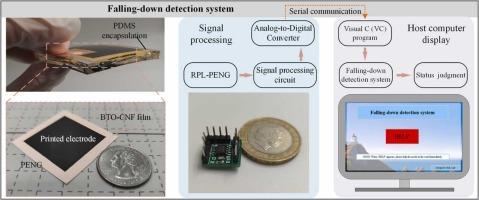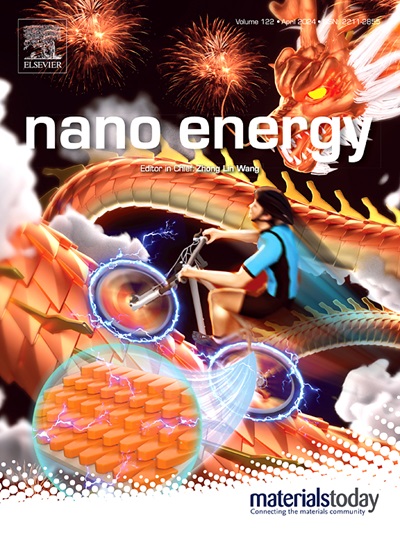Self-powered real-time fall alarm microsystem based on reconfigurable paper-like piezoelectric nanogenerator
IF 16.8
1区 材料科学
Q1 CHEMISTRY, PHYSICAL
引用次数: 0
Abstract
Piezoelectric nanogenerators (PENGs) have emerged as a promising technology for ambient energy harvesting, serving as robust power sources and enabling self-powered electronics. These devices hold great potential in the construction of intelligent medical monitoring systems owing to their unique ability to integrate self-powering capabilities with various functionalities. While numerous high-performance PENGs have been proposed and applied in the field of sensing, the focus has primarily been on device sensitivity and stability, neglecting another crucial characteristic: reconfigurability. Here, a reconfigurable paper-like PENG based on the material properties of the piezoelectric functional layer was developed. The polarization strategy of barium titanate (BTO) and cellulose nanofibril (CNF) piezoelectric film, the feasibility of reconfigurability and biodegradability of piezoelectric functional materials, and the effects of packaging on the electrical output of the device were comprehensively investigated through experimental measurements. Results revealed that 25 wt% BTO content in the functional film yields the highest electrical output of the PENG, and this functional film maintains a stable output even after multiple reconfigurations. Furthermore, the BTO-CNF piezoelectric film provides PENGs with lower internal resistance, enabling compact integration with conventional circuits and showcasing great potential in the field of self-powered smart microsystems, particularly those requiring remarkable reconfigurable properties. Consequently, this study successfully demonstrated an intelligent monitoring microsystem for fall alarms, which is self-powered and flexible.

求助全文
约1分钟内获得全文
求助全文
来源期刊

Nano Energy
CHEMISTRY, PHYSICAL-NANOSCIENCE & NANOTECHNOLOGY
CiteScore
30.30
自引率
7.40%
发文量
1207
审稿时长
23 days
期刊介绍:
Nano Energy is a multidisciplinary, rapid-publication forum of original peer-reviewed contributions on the science and engineering of nanomaterials and nanodevices used in all forms of energy harvesting, conversion, storage, utilization and policy. Through its mixture of articles, reviews, communications, research news, and information on key developments, Nano Energy provides a comprehensive coverage of this exciting and dynamic field which joins nanoscience and nanotechnology with energy science. The journal is relevant to all those who are interested in nanomaterials solutions to the energy problem.
Nano Energy publishes original experimental and theoretical research on all aspects of energy-related research which utilizes nanomaterials and nanotechnology. Manuscripts of four types are considered: review articles which inform readers of the latest research and advances in energy science; rapid communications which feature exciting research breakthroughs in the field; full-length articles which report comprehensive research developments; and news and opinions which comment on topical issues or express views on the developments in related fields.
 求助内容:
求助内容: 应助结果提醒方式:
应助结果提醒方式:


